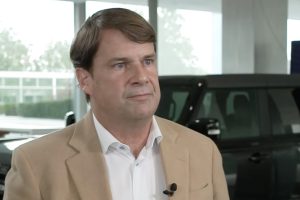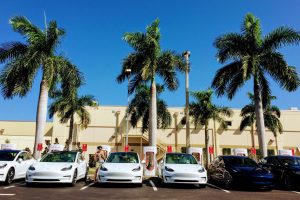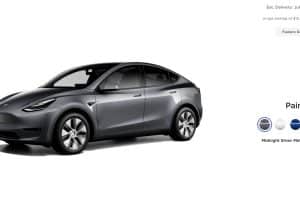- 🚗 Fisker has abandoned plans for direct sales to customers.
- 🏬 The startup is shifting to auto dealerships for sales and services.
- 💰 High-interest rates and expensive real estate contributed to the decision.
- 🌐 Fisker aims to give the money saved to dealers to expedite expansion.
- 🚙 The production of the all-electric Ocean crossover SUV has ramped up to 300 units per day.
- 🌍 Fisker intends to expand retail operations in North America and Europe.
- 📅 Despite production increases, Fisker faced challenges with deliveries, leading to customer dissatisfaction.
- 🤝 The CEO plans to sign with 50 car dealerships by midyear and present at the National Automobile Dealers Association convention.
- 🏭 Fisker’s product lineup includes the Ocean crossover, a $30,000 electric vehicle called the Pear, and an electric midsize pickup named Alaska.
- 💡 The EV startup requires dealers to provide a separate area for the Ocean, buy signage and tools, and cover technician training costs.
In a surprising turn of events, Fisker, the innovative electric vehicle (EV) startup, has decided to abandon its plans for direct sales to customers. This strategic shift towards relying on auto dealerships for sales and services brings forth a new chapter in Fisker’s journey. In this blog post, we explore the reasons behind this decision, the challenges faced, and the potential implications for the future of the electric car industry.
The Decision to Pivot
Fisker’s decision to move away from direct sales can be attributed to a combination of factors. High-interest rates, coupled with the burden of expensive real estate, prompted the leadership to reconsider their approach. Henrik Fisker, the CEO, President, and Chairman of the EV startup, revealed that the complexities of getting people trained in this current economic scenario played a pivotal role in steering away from direct sales.
Financing Expansion Through Dealerships
The revelation from Fisker that the cost of selling a car, including real estate and training expenses, led to a crucial realization. The company decided to redirect this money to auto dealerships, envisioning it as a means to expedite their expansion plans. This shift aligns with Fisker’s ambition to grow rapidly and establish a more significant presence in the competitive electric vehicle market.
Production Scaling Up, Deliveries Falling Short
Despite successfully ramping up production of the all-electric Ocean crossover SUV to an impressive 300 units per day by September 2023, Fisker faced a substantial challenge – delivering these vehicles to eagerly waiting customers. Henrik Fisker acknowledged the issue during the Q3 2023 earnings call, expressing concern about customers who had paid and were waiting for their cars, some growing increasingly impatient.
The Road Ahead: Partnering with Auto Dealers
Looking forward, Fisker has outlined plans to sign agreements with 50 car dealerships by midyear. Henrik Fisker intends to pitch the company’s products, starting with the all-electric Ocean crossover, at the National Automobile Dealers Association convention. This ambitious move signifies Fisker’s commitment to establishing a robust network of partners to drive sales and enhance customer experience.
Diversifying the Product Lineup
Fisker’s product lineup adds an intriguing dimension to this strategic shift. Alongside the Ocean crossover, the company plans to introduce a $30,000 electric vehicle named the Pear and an electric midsize pickup called the Alaska. This diversification suggests a long-term vision for Fisker, aiming to cater to a broader audience with varied electric vehicle preferences.
Collaboration with Dealers: Terms and Conditions
For auto dealerships entering into partnership with Fisker, certain requirements are outlined. The EV startup expects dealers to provide a separate area for the Ocean, ensuring an exclusive space for potential buyers. Additionally, dealers will be responsible for purchasing signage and tools, as well as covering the costs associated with technician training. Fisker envisions a low-cost entry for dealers while maintaining a distinct and enticing space for customers interested in the Ocean.
In conclusion, Fisker’s transition to relying on auto dealerships marks a pivotal moment in its growth trajectory. As the EV industry continues to evolve, this move could set a precedent for how emerging companies navigate challenges and forge strategic partnerships. The electric car enthusiasts and industry watchers alike await the outcomes of this bold decision.





